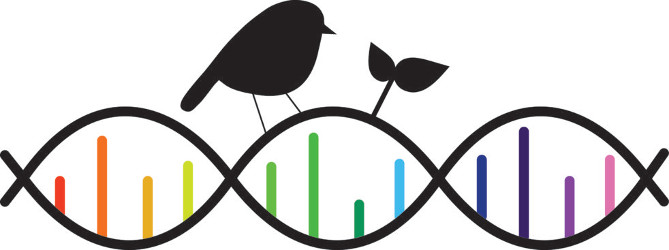ConSERT is privileged to work with threatened taonga (treasured) species endemic to Aotearoa New Zealand. For Māori (the Indigenous Peoples of Aotearoa), all genomic data obtained from taonga species have whakapapa and are therefore taonga in their own right. Thus, these data are tapu (sacred) and tikanga (Māori ways of doing things including practices and protocols) determine how people interact with it. For Māori, whakapapa is a genealogical framework that describes the origins and relationships of all things, linking plants, animals, and people with the environment including the mountains, rivers, and winds, across time and space (Tau 2001, Roberts 2007).
Consistent with FAIR and CARE data principles (Russo Carroll et al. 2020, 2021), genomic data obtained from, and metadata associated with, taonga species in the manuscripts below are stored on a password protected server and will be made available to researchers on the recommendation of the tāngata tiaki (guardians) for the iwi (tribes) and hapū (subtribes) associated with them. For more detailed information, please see Collier-Robinson et al. (2019).
__________________________________________________________________________________________________
Manuscripts
Magid et al. 2022 “A novel bioinformatic approach for identifying and characterizing toll-like receptor gene diversity in a threatened bird” Molecular Ecology Resources. Accepted Article available here.
As per the Data Accessibility and Benefit Sharing sections, here you will find the assembled short-read tchūriwat’/tūturuatu reference genome, unfiltered VCF and associated metadata. As described above, the genomic data for taonga (treasured) species like tchūriwat’/tūturuatu are password protected. To discuss access to these data, please contact tammy.steeves@canterbury.ac.nz.
__________________________________________________________________________________________________
Rayne et al. (2022) “Weaving place-based knowledge for culturally significant species in the age of genomics: Looking to the past to navigate the future” published in Evolutionary Applications and available here.
As per the Data Availability Statement, here you will find the assembled short-read kōura reference genome, unfiltered GBS VCF and associated metadata. As described above, the genomic data for taonga (treasured) species like kōura are password protected. To discuss access to these data, please contact tammy.steeves@canterbury.ac.nz.
__________________________________________________________________________________________________
Forsdick et al. (2021) “Genomic sequencing confirms absence of introgression despite past hybridisation between a common and a critically endangered bird” published in Global Ecology and Evolution and available here.
As per the Data Accessibility section, here you will find the raw GBS data and associated metadata, and the unfiltered VCF, for kakī and poaka. As described above, the genomic data for taonga (treasured) species like kakī are password protected. To discuss access to these data, please contact tammy.steeves@canterbury.ac.nz.
__________________________________________________________________________________________________
Galla et al. (2020) “A comparison of pedigree, genetic, and genomic estimates of relatedness for informing pairing decisions in two critically-endangered birds: Implications for conservation breeding programmes worldwide” published in Evolutionary Applications and available here.
As per the Data Availability section, here you will find the assembled kākāriki karaka genome, and the resequencing VCFs for kakī and kākāriki karaka. As described above, the genomic data for taonga (treasured) species like kakī and kākāriki karaka are password protected. To discuss access to these data, please contact tammy.steeves@canterbury.ac.nz.
__________________________________________________________________________________________________
Galla, Forsdick et al. (2019) “Reference genomes from distantly related species can be used for discovery of single nucleotide polymorphisms to inform conservation management” Genes, 10(1), 9; https://doi.org/10.3390/genes10010009
As per the Data Availability section, genome assemblies and raw reads for the pied stilt and pied avocet are available on Genbank. Here, you will find the re-assembled killdeer, the assembled kakī genome, concatenated versions of all four genomes (kakī, pied stilt, pied avocet, and killdeer), and all VCFs for GBS and resequencing as used in the manuscript. As described above, the genomic data for taonga (treasured) species like kakī are password protected. To discuss access to these data, please contact tammy.steeves@canterbury.ac.nz.
